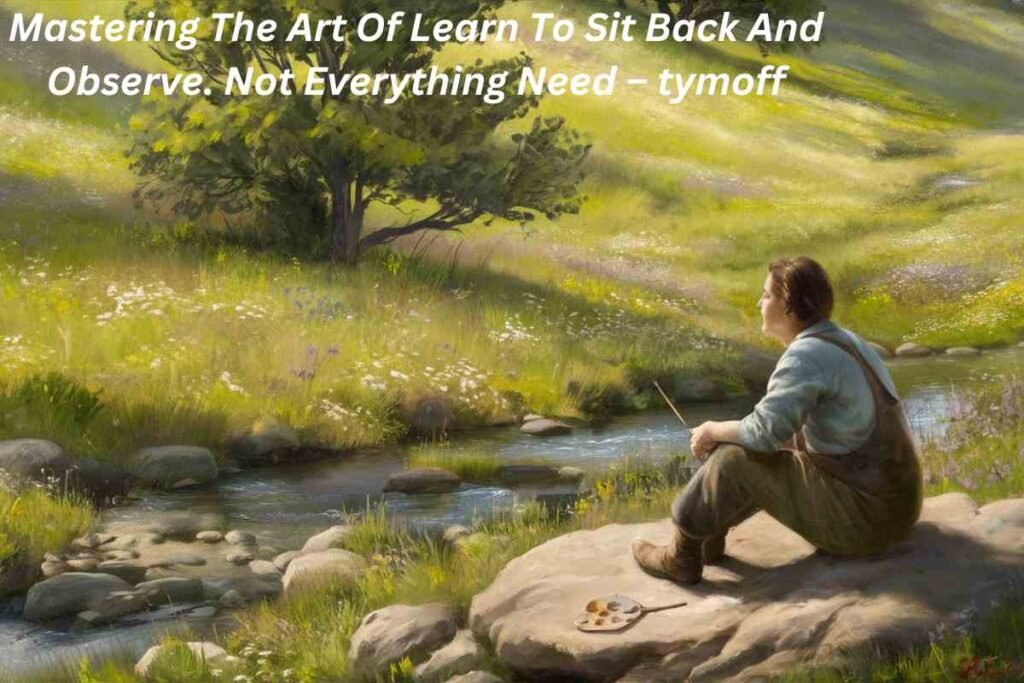Table of Contents
In today’s fast-paced world, the concept of “Mastering the Art of learn to sit back and observe. not everything need – tymoff” is both an art and a skill that many aspire to master.
It requires patience, mindfulness, and a deep understanding of when to act and when to remain still. This philosophy, often highlighted in various self-help and mindfulness teachings, can significantly enhance personal and professional life.
This article explores the importance of this concept, its benefits, practical steps to achieve it, and how to integrate it into daily life.
The Philosophy Behind “Mastering the Art of learn to sit back and observe. not everything need – tymoff”

At its core, the idea to “learn to sit back and observe, not everything needs action” is rooted in ancient wisdom.
Philosophers, spiritual leaders, and modern psychologists alike have emphasized the importance of observation over impulsive reaction.
By taking a step back and observing, individuals can gain a clearer perspective, make better decisions, and cultivate inner peace.
Historical Context
Historically, great thinkers such as Lao Tzu, the ancient Chinese philosopher, and Marcus Aurelius, the Roman emperor, have advocated for the power of observation.
Lao Tzu’s teachings in Taoism emphasize the concept of “wu wei,” which translates to “non-action” or “effortless action.” This doesn’t mean inaction but rather taking action that is in harmony with the flow of life.
Similarly, Marcus Aurelius, in his meditations, often reflected on the importance of self-control and observing one’s thoughts and actions.
He believed that by understanding and observing one’s impulses, one could act more rationally and in accordance with their values.
Modern Interpretations
In contemporary times, this philosophy is echoed in mindfulness practices and cognitive behavioral therapy (CBT).
Mindfulness encourages individuals to observe their thoughts and feelings without immediate judgment or reaction. This practice helps in reducing stress and improving mental clarity.
CBT, on the other hand, helps individuals recognize and change negative thinking patterns by observing and understanding their triggers and responses.
Both these modern practices align with the idea that not every situation demands an immediate reaction, and sometimes, the best course of action is to simply observe and understand.
Benefits of Mastering the Art of Observation
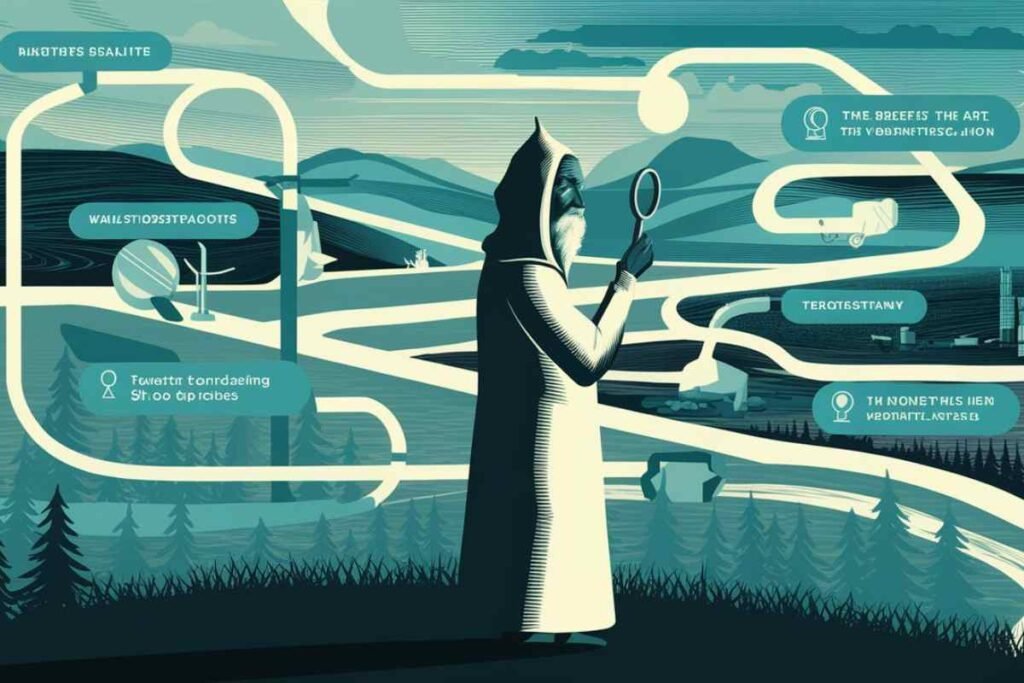
Mastering the art of “learn to sit back and observe, not everything needs action” offers numerous benefits.
These advantages span across various aspects of life, from personal well-being to professional success.
Enhanced Decision-Making
One of the primary benefits of this practice is improved decision-making. When individuals take the time to observe a situation fully, they can make more informed and rational decisions. This prevents impulsive choices that might lead to negative consequences.
Reduced Stress and Anxiety
Constantly feeling the need to act can lead to significant stress and anxiety. By learning to observe and accept situations as they are, individuals can reduce their stress levels.
This approach promotes a more relaxed and balanced state of mind, contributing to overall mental health.
Improved Relationships
In interpersonal relationships, the ability to sit back and observe can lead to better understanding and empathy.
Rather than reacting impulsively during conflicts, taking the time to observe and understand the other person’s perspective can foster healthier and more constructive interactions.
Greater Self-Awareness
Observation is a powerful tool for self-awareness. By regularly observing one’s thoughts, emotions, and behaviors, individuals can gain deeper insights into their inner workings. This self-awareness is crucial for personal growth and development.
Professional Growth
In the professional realm, the ability to observe rather than react immediately can lead to more strategic thinking and better leadership.
Leaders who can assess situations thoroughly before taking action are often more effective and respected.
Practical Steps to Master the Art of Observation
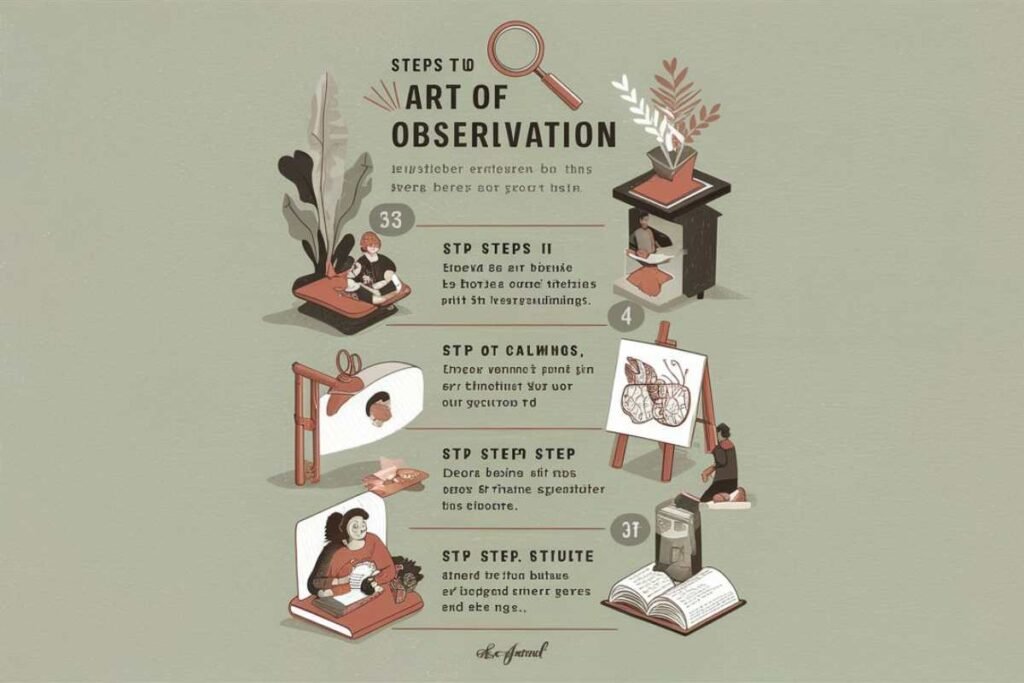
While the benefits of mastering this art are clear, the path to achieving it requires practice and dedication. Here are some practical steps to help individuals learn to sit back and observe:
Practice Mindfulness Meditation
Mindfulness meditation is an excellent way to cultivate the habit of observation. By focusing on the present moment and observing thoughts and sensations without judgment, individuals can train their minds to be more observant in daily life.
Develop a Daily Reflection Habit
Setting aside time each day for reflection can enhance observational skills. Journaling thoughts and experiences allows individuals to review their actions and reactions, fostering a deeper understanding of their behavior.
Cultivate Patience
Patience is a critical component of observation. Practicing patience in daily activities, such as waiting in line or dealing with delays, can help build the habit of observing rather than reacting.
Listen Actively
Active listening is a powerful form of observation in interpersonal interactions. By truly listening to others without planning a response, individuals can understand better and respond more thoughtfully.
Limit Distractions
In today’s digital age, distractions are abundant. Reducing distractions, such as limiting smartphone use and creating a focused environment, can enhance the ability to observe.
Practice Detachment
Detachment does not mean indifference but rather observing without becoming overly attached to outcomes. This practice can help individuals remain calm and clear-headed in various situations.
Engage in Slow Activities
Engaging in slow, deliberate activities such as gardening, cooking, or walking can help individuals practice the art of observation. These activities encourage mindfulness and present-moment awareness.
Integrating the Philosophy into Daily Life
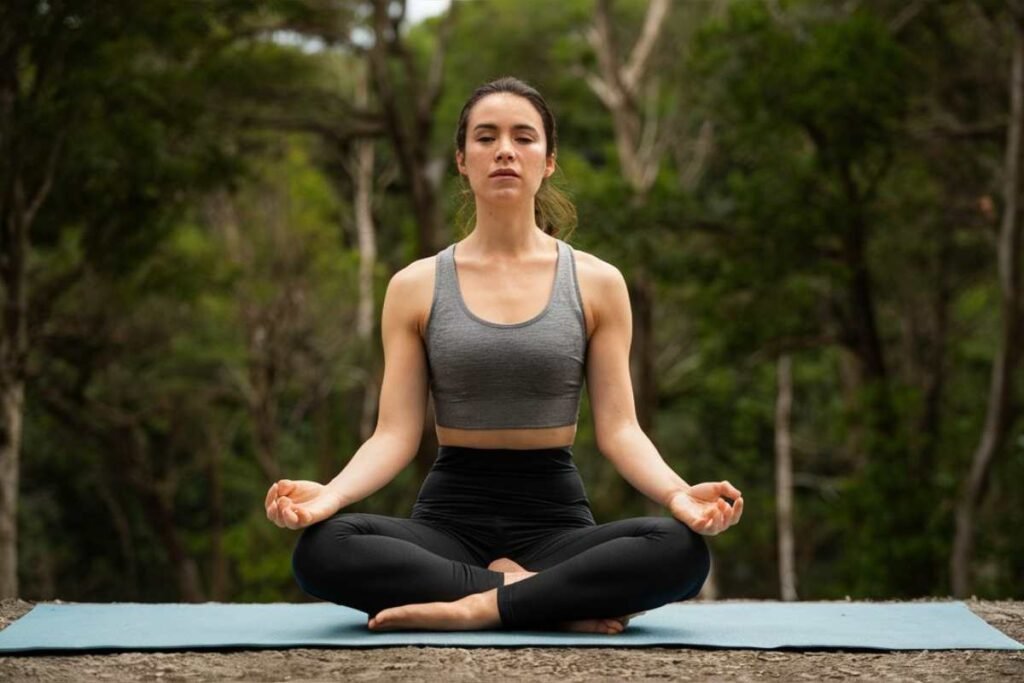
Integrating the philosophy of “learn to sit back and observe, not everything needs action” into daily life involves consistent practice and a mindful approach to various situations.
At Home
In the home environment, this philosophy can be applied to interactions with family members. For instance, when conflicts arise, taking a step back to observe emotions and dynamics before responding can lead to more harmonious resolutions.
Additionally, creating a calm and mindful home atmosphere through practices such as meditation or quiet time can reinforce this habit.
At Work
In the workplace, adopting this approach can enhance productivity and professional relationships. During meetings or collaborative projects, observing before speaking allows for more thoughtful and impactful contributions.
Furthermore, leaders who practice this philosophy can better understand their team’s needs and dynamics, leading to more effective management.
In Social Settings
Social interactions can benefit significantly from a mindset of observation. Whether in casual conversations or heated debates, taking the time to observe body language, tone, and context can lead to more meaningful and respectful exchanges.
In Personal Development
For personal development, incorporating this philosophy can lead to significant growth. By regularly observing one’s progress, setbacks, and emotional responses, individuals can develop a more nuanced understanding of their personal journey and make more intentional decisions.
Challenges and How to Overcome Them

While the benefits are clear, mastering the art of “learn to sit back and observe, not everything needs action” comes with its challenges. Recognizing and addressing these challenges is crucial for success.
Overcoming Impulsivity
Impulsivity can be a significant barrier to observation. Techniques such as deep breathing, counting to ten, or taking a short walk can help manage impulsive tendencies.
Managing External Pressures
External pressures from work, family, or society can make it difficult to adopt a more observational approach. Setting boundaries and prioritizing self-care can help mitigate these pressures.
Dealing with Internal Resistance
Internal resistance, such as a fear of missing out (FOMO) or the need for control, can also hinder this practice.
Acknowledging these feelings and gently challenging them through mindfulness and self-reflection can aid in overcoming resistance.
Building Consistency
Consistency is key to mastering this art. Setting small, achievable goals and gradually increasing the practice of observation can help build a sustainable habit.
Stories and Examples of Successful Implementation
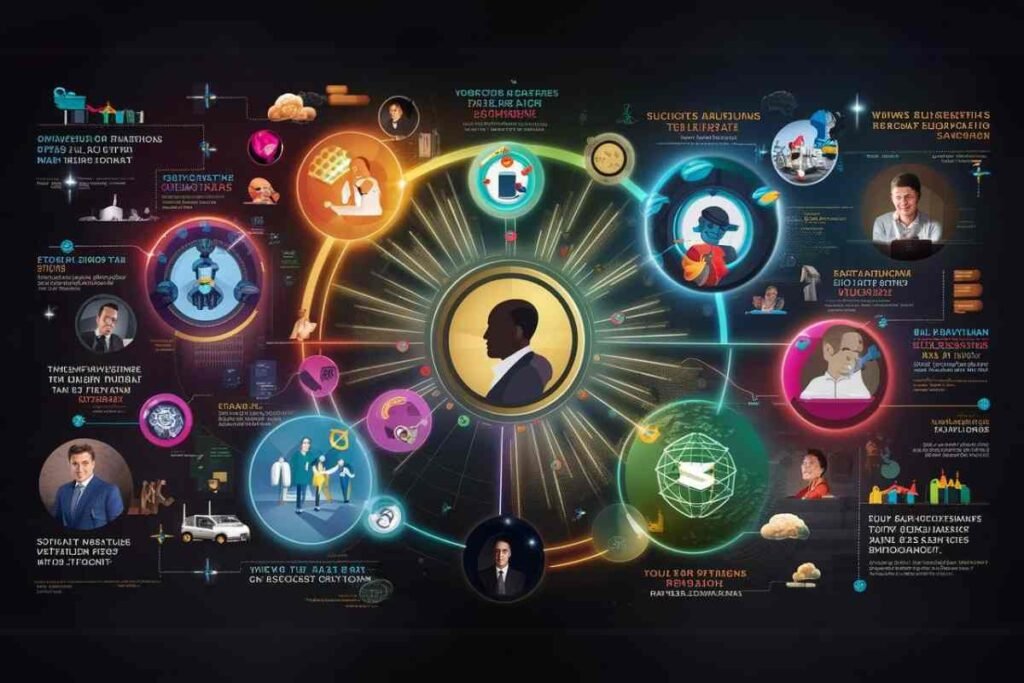
The Story of Nelson Mandela
Nelson Mandela, the former president of South Africa, is a profound example of someone who mastered the art of observation.
During his 27 years in prison, Mandela spent a considerable amount of time observing his captors and the dynamics of power.
This period of observation allowed him to understand his adversaries deeply, leading to his successful negotiations and the eventual dismantling of apartheid.
The Corporate Leader: Satya Nadella
Satya Nadella, CEO of Microsoft, is another example. Known for his empathetic leadership style, Nadella often emphasizes the importance of listening and observing. His approach has transformed Microsoft’s corporate culture, fostering innovation and collaboration.
Everyday Heroes
Everyday individuals also exemplify this practice. Consider a teacher who observes students’ behavior to understand their needs better or a parent who listens to their child’s unspoken feelings. These examples highlight the transformative power of observation in daily life.
Conclusion
Mastering the art of “Mastering the Art of learn to sit back and observe. not everything need – tymoff” is an invaluable skill that enhances decision-making, reduces stress, improves relationships, and fosters self-awareness.
By embracing mindfulness, active listening, and daily reflection, individuals can cultivate a more observant and intentional approach to life.
The benefits extend across personal well-being and professional success, highlighting the timeless relevance of this philosophy.
As we navigate an increasingly complex and fast-paced world, the ability to observe thoughtfully before acting will become an essential tool for creating a more mindful, balanced, and fulfilling life.
FAQs
What “Mastering the Art of learn to sit back and observe. not everything need – tymoff” means?
“Mastering the Art of learn to sit back and observe, not everything need – tymoff” means taking the time to thoughtfully observe situations before reacting, understanding that immediate action isn’t always necessary or beneficial. It emphasizes patience, mindfulness, and making more informed decisions.
How can this philosophy improve decision-making?
By observing situations fully before deciding, individuals can gather more information and consider various perspectives, leading to more informed and rational choices.
What are some benefits of mastering the art of observation?
The benefits include enhanced decision-making, reduced stress and anxiety, improved relationships, greater self-awareness, and professional growth.
How can mindfulness meditation help in learning to sit back and observe?
Mindfulness meditation trains the mind to focus on the present moment, allowing individuals to observe their thoughts and sensations without judgment, which enhances their ability to observe in daily life.
How does active listening relate to this philosophy?
Active listening involves fully concentrating on what others are saying without planning a response. This practice helps individuals understand better and respond more thoughtfully, aligning with the principle of observation before action.
What are some practical steps to develop observational skills?
Practical steps include practicing mindfulness meditation, developing a daily reflection habit, cultivating patience, limiting distractions, practicing detachment, and engaging in slow activities like gardening or walking.
How can this philosophy be integrated into professional life?
In the workplace, observing before acting can lead to more strategic thinking, better leadership, and improved productivity. It helps in understanding team dynamics and making more impactful contributions during meetings and projects.
What challenges might one face when adopting this philosophy?
Challenges include overcoming impulsivity, managing external pressures, dealing with internal resistance like FOMO, and building consistency in practicing observation. Techniques like deep breathing, setting boundaries, and gradual goal-setting can help overcome these obstacles.
